Peter Dornauf – 28 September, 2010
Shepherd sees modern puppetry as providing a similar kind of subversive edge to nihilistic Dada. If he wants to elevate its status, there are certainly many precedents there in the history of art. But whether putting them in a gallery and hanging them off walls will turn them into art rather than artefacts is another question. Followers of George Dickie and his institutional theory of art will certainly think so.
Hamilton
Strings Attached: Puppets and stop-frame Animations.
Curated by Stuart Shepherd
7 September - 28 September 2010
First it was photography, then film, followed by textiles, now it’s puppetry staking a claim as a fine art practice. Where will it end? What with all boundaries blurred and every hierarchical ladder pulled down, will there be anything left to simply call craft as everything aspires to a higher calling?
Curator, Stuart Shepherd (was lecturing at Wintec, now returned to Massey, Wellington) has been thinking recently about the medium of puppetry as a fine art form, hence the current exhibition at RAMP, Waikato Wintec, called Strings Attached.
It’s a mini survey of work by New Zealand puppeteers and animators, mostly from Hamilton and Wellington, including Shepherd’s own kinetic tableau of marionette creations, the raison d’etre for which is the curator’s search for marginal art forms which in turn necessitates further expansion of the definition of contemporary art.
The first bit of definition stretching probably began with Duchamp in 1915 and the paradigm shift of Dada that involved a nihilistic response to the carnage of the First World War where ready-mades subverted aesthetic assumptions. What is interesting is that puppetry was part of that Dada practice, carried out at the Cabaret Voltaire with Emmy Hennings providing satirical skits alongside companion Hugo Ball and others. They performed nightly in neutral Switzerland while the rest of the western world went about casually murdering each other in high numbers.
Shepherd sees modern puppetry in the same vein, providing a similar kind of subversive edge. If he wants to elevate its status, there are certainly many precedents there in the history of art. But whether putting them in a gallery and hanging them off walls will turn them into art rather than artefacts is another question. Followers of George Dickie and his institutional theory of art will certainly think so.
Art theories aside, the pieces on display - these include works by Dr. Lisa Perrott, lecturer in Screen and Media studies at Waikato University, Mike Heynes’s post-punk sci-fi stop-motion animations, Rose Beauchamp’s shadow puppets, Carlos Wedde’s animations, film stills from Deborah Puerto Rico and Phillipa McDermott’s finely presented satirical figures - are part of a New Zealand art tradition that has Len Lye’s kinetic works and experiments with puppetry as a precursor.
Puppetry itself of course has had a long and distinguished history, its roots reaching back to ancient Egypt, Greece and classical Rome. That rich European heritage and its significance is reflected in the recent establishment of the Museum of Black Theatre in Czechoslovakia where puppets and props from Germany and Switzerland as well as Czech theatres are on show.
At a popular level it could be argued that contemporary cartoons like The Simpsons, Family Guy and South Park are the modern equivalent of the ancient practice of puppetry that often pokes fun, lampooning, sometimes savagely, at both political and cultural life. The animation work of both Heynes and Wedde sits somewhere along that spectrum. Any endeavour that highlights underexposed art forms is laudable and Shepherd deserves effusive compliments for such a curatorial initiative here in New Zealand.
Peter Dornauf
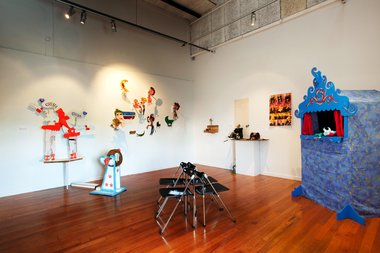

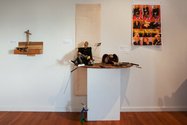
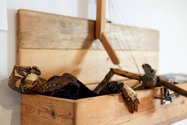

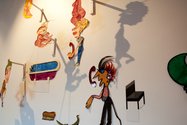


 Two Rooms presents a program of residencies and projects
Two Rooms presents a program of residencies and projects Advertising in this column
Advertising in this column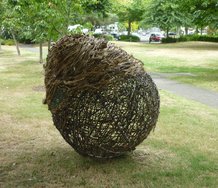
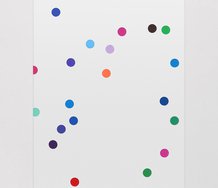
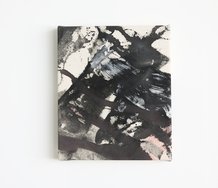
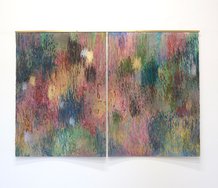
This Discussion has 0 comments.
Comment
Participate
Register to Participate.
Sign in
Sign in to an existing account.